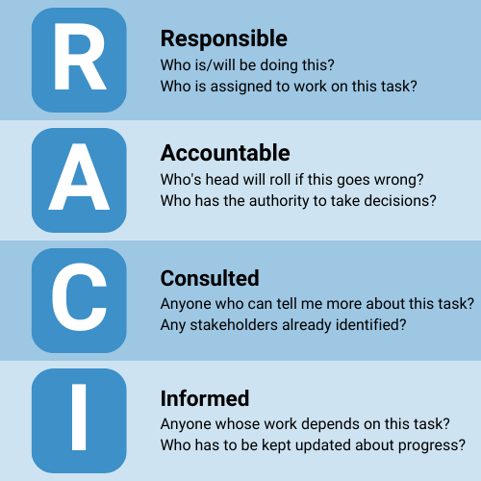This article covers:
- What is a Business Process?
- What is Process Mapping?
- The 6 Main Shapes used in a Process Diagram
- The Noun-Verb Methodology of Process Mapping
- Benefits of the Noun-Verb Methodology
- Try Process Mapping for Free
What is a Business Process?
- A Customer Order is transformed into a Delivered Product
- A Supplier Invoice is transformed into a Supplier Payment
- A Staff Vacancy is transformed into a New Employee
The Noun-Verb method simply adopts this definition of a business process, and applies it rigorously.
What is Process Mapping?
Process mapping involves drawing process diagram that clearly identify the main steps involved in performing the transformation, the items used and the items produced when the business process has been completed.
The 6 Main Shapes used in a Process Diagram
- An ‘Activity’ shape is used to describe something you do.
- A ‘Deliverable’ shape is used to describe something you produce.
Activities are the steps of the business process and are described using verbs.
Deliverables are the items produced (or ‘delivered’) when each step of the process is complete and are described using nouns.
These are also:
- Inputs
- Outputs
- Suppliers
- Customers
To help explain these terms, the process diagram below shows part of a map of a recruitment process. In this diagram, the Activities are ‘Define vacant position using specification template’ and ‘Pass to Director for approval’. The other symbols are the Deliverables.

Outputs are the Deliverables produced by an Activity. These Outputs then become Inputs to other Activities; for example ‘Job specification’ is both an Output from ‘Define vacant position using specification template’ and an Input to ‘Pass to Director for approval’.
Suppliers are the people, organisations or Activities that produce the Inputs.
Customers are the people, organisations or Activities that use the Outputs.
The Noun-Verb methodology of Process Mapping
The rules of the Noun-Verb method are very simple:
- Each Input or Output is described using a noun.
- Each Activity is described using a verb.
- Each separate page of a process map must have at least one Page Input (i.e. a Deliverable with no Suppliers on the same page) and at least one Page Output (i.e. a Deliverable with no Customers on the page).
- No two verbs can be directly connected, and no two nouns can be directly connected. (This is a recommendation rather than a rule and can be strongly or weakly enforced depending on the nature of the content being produced and the level of detail.)
Benefits of using the Noun-Verb Methodology
There are 3 main benefits of using the Noun-Verb methodology:
- The focus on what's delivered
- Cost and return on investment can be easily modelled
- The handling of metrics is made easier and more useful
Each of these are explored below.
1. The focus on what's delivered
Using the Noun-Verb method highlights the difference between Activity and Productivity.
In the Noun-Verb method, the verbs (Activity shapes) represent 'work performed'. The problem however is that a person can work all day long and not actually deliver anything of any value.
The nouns (Deliverable shapes) represent 'product delivered', i.e. they explicitly identify the benefit of doing the work.
So, in the example map referenced above, the first Activity "Define vacant position using specification template" is in and of itself not at all valuable, in fact, it represents a cost to the organisation.
The value of performing the work however is explicitly documented in the output that is delivered, in this case the "Approved recruitment brief".
In the Noun-Verb Method, the process author is required to document Activity and Productivity. As such, they are required to understand precisely why a given Activity does actually deliver something of value, and to record precisely what this is.

Without the discipline of Noun-Verb, the tendency is to focus very heavily on the verbs, and the process map then simply becomes a list of things people do; it is what people deliver that matters most however, and the adoption of Noun-Verb requires equal focus on delivery.
2. Cost and return on investment can be easily modelled
The second major benefit of explicitly separating out nouns and verbs is that Investment and Return-on-Investment can be modelled. Clearly, the verbs in the process model represent areas of investment; a person has to be paid to perform a task, or machinery purchased and so on. The nouns on the other hand represent the return for making that investment. So, 'Define vacant position using specification template' might cost £700, and in return for this investment, an 'Approved recruitment brief' is received. Using the Noun-Verb Method it is possible to perform this analysis on a micro or macro level simply by aggregating costs.
3. The handling of metrics is made easier and more useful
The third major benefit comes from the recognition that the verbs in the model typically relate to the work people perform; as such, attributes relating to:
- Responsibility
- Accountability
- Time
- Effort etc.

The nouns however typically relate to the information sources in the organisation. For these you want to capture the applications used to produce or store the output, the location of the template to produce it etc.
By separating the nouns from the verbs, the handling of metrics that describe the model is made much clearer, more tractable and more useful.
In summary the characteristics of the Noun-Verb entities are as per the table below.
| Noun |
Verb |
| Productivity |
Activity |
| Return on Investment |
Investment |
| Information (templates, applications, …) |
People (management, responsibilities, …) |
Triaster developed the Noun-Verb process mapping methodology to solve the far too common issue of extremely complex process maps, which far from helping with process clarity, just confuse most people. At the same time the Noun-Verb approach allows sufficient data to be captured and stored in a process model to support process analysis and improvement.
Try Process Mapping for free
For the practical application of the Noun-Verb process mapping methodology, Triaster has developed both Process Library (Hosted/On-premises) and Process Library (SaaS).
Process Library (SaaS) is the perfect way to quickly document how everything should be done and instantly share it with your whole team. Delivering the ultimate drag-and-drop process mapping software and a start point Process Library, whilst being really easy to use - I suggest you try Process Library (SaaS) now.
Related Articles:
Mapping business processes: What level should I map to?
Process Mapping: 5 key skills you need to have
Related White Papers:
Process Mapping Report: How to Create Successful Process Maps
The Process Mapping Checklist
Written by Michael Cousins
Mike founded Triaster in 1994. A thought leader in business improvement, he has led Triaster ever since, spearheading its development of beautifully engineered business improvement software, that is both full of the functionality required by business analysts and that end users find really easy to use.

